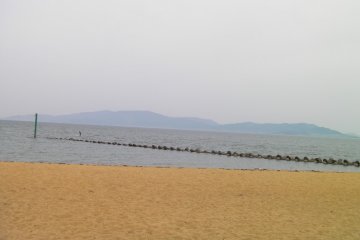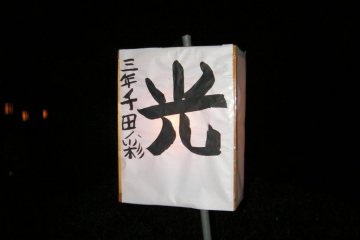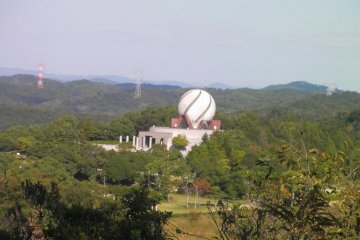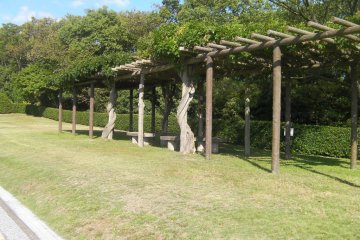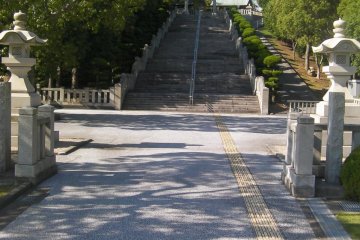Kamiyama Park is a wonderful mountaintop retreat located in southern Saidaiji, Okayama City that is connected to the Honbushin religion. You can get there by the Kugui bound Ryobi bus from Saidaiji Station. Once you arrive in the general area you’ll have to hike up a narrow road that leads to the entrance of the park.
When you arrive at the entrance, you might end up asking yourself whether it is a shrine or a temple. There is a fountain for cleansing the hands that is typical of shrines and temples throughout Japan but there is something different about this place.
One difference is the atmosphere of a park that has been blended with a religious facility. Walking up the sunlit tree-lined path toward the park, the Seto Inland Sea becomes visible. If you look down you can see Kugui Village, while off in the distance you can gaze upon the dotted islands that reach out to Shikoku.
Turning left at the crossroads will take you past a trellis and a rock garden that offer a quiet place to rest before resuming your exploration. Further on, steps lead to a stone Shinto gate that confirms the connection of the park to that ancient religion. Upon reaching the steps, a sign prohibiting photography protects the gigantic 7 meters high, 7 meters wide and 1 meter thick concrete sun-moon disc that sits behind the Shinto gate. The disc represents the power of kami or God as manifested in the sun and the moon.
Walking through the park you’ll notice that there are plenty of places to rest as well as endless paths that lead to gardens, streams and fountains. There are also paths into the forest that surrounds the park.
At the far end of Kamiyama Park there is a fascinating spherical marble building that is said to relate to the Honbunshin idea of rebirth. This structure can be seen from miles around by those approaching the mountain.
A visit to Kamiyama Park is chance to have a look at a unique part of Japan’s religious landscape. The beauty of the park, its structures and the surrounding nature come together in a way you have never seen before.




